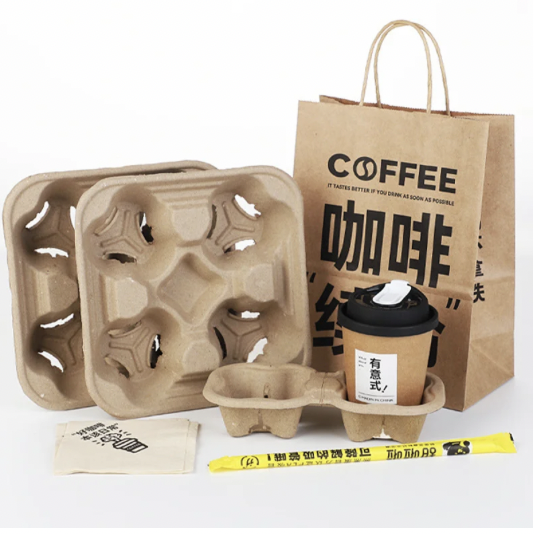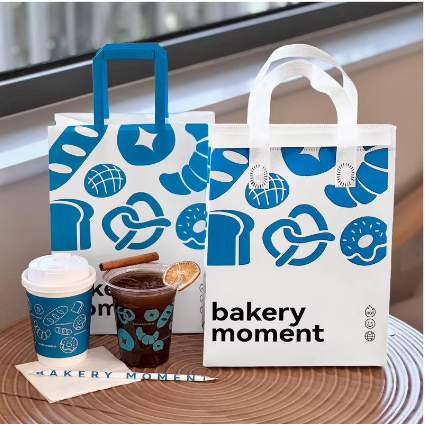The Growing Environmental Crisis of Coffee Packaging
Plastic Dominance in Single-Use Packaging
Coffee packaging relies heavily on plastic, with around 300 million tons manufactured every year, most of it meant for just one use before being thrown away. The environmental consequences are serious, especially when plastic ends up in our oceans where it harms countless sea creatures. Studies indicate that hundreds of thousands of marine animals suffer from plastic pollution annually. And people are starting to notice too many surveys now show that about seven out of ten consumers worry about plastic waste and want companies to find better alternatives. As awareness grows among customers, the coffee business faces increasing demands to address how their packaging affects the planet.
Non-Recyclable Materials in Urban Waste Streams
Coffee packaging presents real problems because most of it uses materials that just won't break down or get recycled properly. Think about those multi-layer packages that keep coffee fresh but end up sitting in landfills forever. Cities across the country are dealing with mountains of trash, and studies show around half of all coffee packaging winds up buried instead of being recycled correctly. When this happens, it makes everything worse for local waste systems. Landfills grow bigger, recycling facilities become overwhelmed, and we release more harmful gases into the atmosphere. Something needs to change fast. Better waste sorting programs, clearer labeling on packages, and investment in alternative materials could help turn things around for both consumers and the environment.
Cumulative Impact on Landfills and Oceans
What happens to all those coffee bags after we finish our morning brew? The truth is most end up in landfills where some plastic components could stick around for hundreds of years before decomposing. We're talking about mountains of waste that just keep growing. And it's not just landfills either. Every year around 8 million tons of plastic find their way into our oceans, creating real problems for sea life and coastal communities alike. Fish get tangled in plastic rings, turtles mistake floating debris for food, and entire beaches become dumping grounds for discarded coffee packaging. Many consumers are now demanding change from coffee companies. Some brands have started experimenting with compostable materials or reusable containers, but progress remains slow. Real solutions will require cooperation between farmers, roasters, retailers, and customers who want their daily cup without leaving behind a legacy of pollution.
Sustainable Material Innovations in Coffee Packaging
Compostable Bio-Based Packaging Solutions
Materials made from plant sources such as PLA, which comes from corn starch, present a greener option compared to regular plastic products. These materials break down when placed in proper compost environments, cutting down on waste problems associated with coffee packaging. Studies indicate these compostable options cut carbon footprints by around 80 percent compared to standard plastic packaging made from oil. What's interesting too is what people actually want these days. Market research shows roughly two thirds of shoppers gravitate toward coffee brands that use compostable containers. For businesses trying to go green while still appealing to customers who care about sustainability, this represents real opportunity in the coffee packaging market right now.
Advancements in Recycled Content Materials
The coffee packaging world is seeing some pretty exciting changes thanks to new ways of using recycled plastics. Companies are finding they can keep their product quality intact while cutting back on brand new materials, which makes for greener packaging overall. Research shows when packaging contains around 30% recycled material, it cuts down on carbon emissions during production quite a bit something that fits well with worldwide sustainability targets. Take look at what some major coffee brands have done recently with their packaging transitions to recycled content. Consumers seem happy with these changes too, and many report feeling better connected to brands making eco-friendly choices. Going green isn't just good for planet earth anymore it actually helps build stronger relationships between companies and their customers over time.
Plant-Based Biodegradable Alternatives
Coffee shops are starting to switch to plant based options like bagasse (sugarcane fiber) and hemp when it comes to packaging their beans. Unlike regular plastic wrappers that hang around for decades polluting landfills, these eco friendly materials can decompose in just a few months if disposed properly. Research from places like Stanford University actually backs this up showing how quickly they break down in compost conditions. The market is definitely moving in this direction too. Last year alone we saw nearly half a billion dollars worth of biodegradable coffee packaging sold across North America. This consumer demand isn't just passing fad either. More and more cafes report customers specifically asking about what kind of packaging their coffee comes in before making purchases. For small businesses especially, adopting greener packaging isn't just good PR anymore it's becoming necessary to stay competitive in local markets where sustainability matters to regular patrons.
Challenges in Implementing Green Packaging Systems
Cost Comparison: Traditional vs. Sustainable Materials
A big problem when switching to sustainable packaging is the upfront price tag that's generally higher than regular materials. Green packaging solutions often come with a 30% premium which creates real money concerns for companies trying to transition. But wait, there's another side to this story. Looking at it over time, these investments actually pay off. Businesses save on trash removal costs and build stronger customer relationships because people today really care about supporting eco-friendly brands. Take a look at recent market trends too. The folks at McKinsey found something interesting: items marketed with environmental, social, and governance claims are gaining traction fast among shoppers. This shows that going green isn't just good for the planet anymore, it also helps companies stand out and keep customers coming back.
Infrastructure Gaps in Composting Networks
Compostable packaging just isn't working as well as it should because most places don't have proper composting setups. According to recent numbers, around 12 percent of people actually live near industrial composting sites, which means most compostable stuff ends up in landfills anyway. Something needs to change here. We really need better composting options across the board. Maybe start with small community projects or work together with local trash companies to create more drop off points. Getting more people involved in composting would help these eco-friendly packages do what they're supposed to do for our planet.

Consumer Education on Proper Disposal
Green packaging won't really work unless people know what to do with it after they're done. Most folks still don't get how to properly handle those biodegradable or compostable packages because nobody tells them straight out. We've seen numbers showing there's a big knowledge gap here, and that just defeats the whole purpose of going green with packaging materials. Some coffee companies have had good luck changing this though. Their campaigns focus on teaching customers where exactly these special packages belong once they're empty, which cuts down on overall waste pretty well. When more people actually understand how their choices affect the environment, sustainable packaging starts making a real difference instead of just sitting in landfills.
Regulatory Pressures Shaping Packaging Standards
Global Bans on Single-Use Plastics
A growing number of countries around the world are moving against single use plastics, and places like the UK, Canada, and many European Union members have already passed tough laws to cut down on plastic waste. This has hit several industries hard, especially coffee shops that rely heavily on disposable cups and lids for takeaway orders. The numbers tell an interesting story too – when coffee chains adopt these plastic bans, they actually manage to slash their carbon emissions quite a bit, though it does mean completely overhauling how some parts of their business work. When companies follow these rules, they tend to get creative with alternatives. We're seeing lots of new biodegradable materials hitting the market as coffee businesses scramble to find packaging options that still look good on the counter while meeting all those environmental standards. What started as just following regulations has turned into something bigger for many coffee brands looking to build stronger green credentials.
Certification Programs for Sustainable Packaging
Programs like Cradle to Cradle and FSC certifications are really important for pushing forward sustainable packaging because they give shoppers clear information about what they're buying. When products carry these labels, people tend to trust them more since there's proof that manufacturers follow strict environmental guidelines and ethical practices. Many coffee companies have noticed this effect on their bottom line after getting certified. Take Starbucks for instance, they've been working hard to incorporate these sustainability practices across their operations for years now. By doing so, coffee brands can stand out from competitors in a crowded market where eco-conscious consumers are looking for trustworthy options. This not only helps improve their standing among customers but also makes sense financially when considering long term brand value.
Industry Collaborations for Circular Solutions
The coffee packaging world is seeing some real progress thanks to companies working together rather than going it alone. Trade groups have been bringing manufacturers, retailers and even waste management firms into the same room lately. What's happening? We're starting to see actual recycling programs take shape across different regions. The big coffee chains aren't just talking about sustainability anymore they're sitting down with material scientists to create packaging that works for everyone involved. Sure, single companies can come up with good ideas, but when multiple stakeholders get their hands dirty in the process, something special happens. The solutions tend to be more practical because they consider all angles from production costs to end-of-life disposal. While we're not there yet, these joint efforts are definitely moving the needle toward a coffee industry that cares about what happens after the cup hits the trash bin.
FAQ
What are the environmental impacts of traditional coffee packaging?
Traditional coffee packaging, predominantly made from plastics, contributes significantly to marine pollution and increases landfill waste. This non-biodegradable packaging exacerbates environmental issues, posing risks to marine life and causing long-term land and ocean pollution.
Why is the coffee industry focusing on sustainable packaging?
With growing consumer awareness about environmental issues and increasing regulatory pressures, the coffee industry is transitioning towards sustainable practices. Sustainable packaging reduces carbon footprints, aligns with consumer values, and enhances brand loyalty.
What types of sustainable materials are being used in coffee packaging?
Sustainable coffee packaging materials include compostable bio-based options like PLA, recycled content materials, and plant-based biodegradable alternatives such as bagasse and hemp.
How can consumers help promote sustainable packaging practices?
Consumers can promote sustainable packaging by choosing brands that use eco-friendly materials, properly disposing of biodegradable packaging, and staying informed about sustainable practices and regulations.
What challenges do companies face in implementing green packaging systems?
The main challenges include higher costs for sustainable materials, inadequate composting infrastructure, and a need for greater consumer education on proper disposal methods to maximize environmental benefits.
